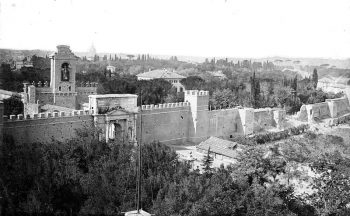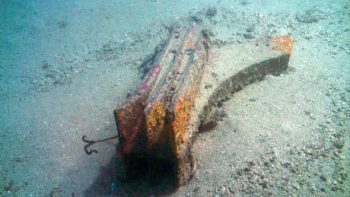Archive for November, 2011
La Breccia di Porta Pia Posted by Serena on Nov 30, 2011
Porta Pia is the name of the famous gateway designed by Michelangelo as an entrance through the Aurelian walls which once delimited the Stato Pontificio (Papal State). Ordered by Pope Pio IV as a replacement for the ancient Roman Porta Nomentana, Porta Pia was constructed between 1561 and 1565. Apparently Michelangelo presented three different designs…
Compriamo una Casa Posted by Serena on Nov 27, 2011
In my last blog we looked at the language we use when describing our homes. Today we’ll look at the jargon that you have to face if you want to buy a house here in Italy. Here are a few examples taken from un’agenzia immobiliare (an estate agency) in my local town, Pontremoli. 1. Un…
Descriviamo la Nostra Casa Posted by Serena on Nov 25, 2011
The most common form of housing in modern Italy is un appartamento in un palazzo (an apartment in a a condominium or block of flats). I miei genitori, per esempio, abitano in un appartamento al quarto piano di un condominio (My parents, for example, live in an apartment on the fourth floor of a condominium…
Il Testamento di un Albero Posted by Serena on Nov 22, 2011
Il Testamento di un Albero (The Final Testament of a Tree) is a powerful poem by the Roman poet Trilussa whose real name was Carlo Alberto Salustri (1871 – 1950). The nom de plume Trilussa is actually an anagram of Salustri’s real name. Trilussa, who’s father died when he was only three years old, lived…
Pronto Soccorso Posted by Serena on Nov 21, 2011
Venerdì sera, verso le sette, è suonato il telefono. Era la vicina di casa dei miei: “Tua mamma è caduta e si è rotta la gamba… L’ambulanza è già venuta e l’ha portata all’ospedale” mi ha detto. On Friday evening at about seven o’clock the phone rang. It was my parents’ neighbour: “Your mother has…
Il Rostro Posted by Serena on Nov 18, 2011
Rostro: pesante oggetto di sfondamento costituito da un unico pezzo fuso in bronzo montato sott’acqua sulla prua delle navi antiche per affondare le navi nemiche. Rostro: heavy battering ram made of a single piece cast in bronze which was mounted on the bow of ancient ships below the water line to sink enemy ships. Above…
Tu and Lei – Part 2 Posted by Serena on Nov 16, 2011
In Tu and Lei – Part 1 we looked at the changes that take place when we address people using either the informal tu or the formal Lei. Today we’ll look at the differences between tu and Lei when we give polite orders such as ‘take the next road on the left’ or ‘take a…




